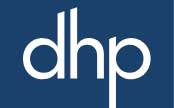Do you know how efficient your back office operations management is from both an internal perspective and a customer perspective? Is your back office optimised with a small cost base and delivering consistent, high quality service for your customers? Those operations that recognise the importance of delivering competitive advantage through improved service and reduced cost will also recognise that it’s important to be able to answer these questions.
The back office is frequently considered to be lower profile and less glamorous than its customer-facing counterpart. Yet the back office operations management is responsible for a massive range of administrative processes which are fundamental to the running of an organisation. It's the engine that drives business performance.
In today's rapidly evolving business environment, the back office is frequently challenged to devise new processes very quickly in order to handle new business. Cost and efficiency can sometimes take second place to the practicalities of simply getting the job done. And with so many personnel and complex activities to manage, it’s no wonder that the back office can become inefficient, leading to an increase in the cost base.
Efficiency is doing things right; effectiveness is doing the right things.

Making the back office more efficient
To truly optimise and unlock the full potential of your back office operation, there are a number of key elements that underpin delivery.
These are:
- Operations Management Frameworks – defining the way you work and what is expected of managers and staff
- Practice & Principles – creating regular routines for a consistent approach – daily planning, work allocation, workflow monitoring, active management routines, management information, clear communications and visibility.
- Accreditation – of managers to ensure they can implement sustainable change and continual improvement through focus on both process and people.
- Quality Frameworks – providing a clear structure and a quality philosophy that gets staff and management working towards the common goal of continual improvement.
- Forecasting and planning – predicting future workload to ensure teams have the capacity. Planning for distribution of work to the right people, at the right time, with the right skills. Making maximum use of available resources.
- Software – integrated system allows all workflows to be monitored from a central dashboard, enabling efficient resourcing in line with work volumes. Facilitates accurate forecasting, predictive forecasting and effective capacity management.
- MI Suite – enabling holistic understanding of people and process – historical, real-time and predictive.
Don’t lower your expectations to meet your performance. Raise your level of performance to meet your expectations.

The role of software
Software plays a vitally important role in achieving high levels of productivity and efficiency when combined with correctly trained managers. But if you have the wrong people doing the wrong things at the wrong time, software alone will fail to deliver the majority of the potential gains.
To maximise these gains, your core systems and processes need to be optimised and your managers need to adopt the right behaviours, mindset and routines.
Are you experiencing any of these issues in your back office operations management?
- Inconsistent service delivery
- Customers experiencing significant turnaround times and long elapsed end-to-end processing, or you just don’t know?
- Lack of transparency, down to individual items and tasks
- Inaccurate MI, e.g. on forecasting, effective planning, inability to combine all risk elements in one place
- Spiralling costs
- Lack of robust action planning
An inefficient back office will cause the above symptoms. If you recognise any of these within your organisation, it’s likely that optimising your back office can deliver significant and positive change.
If you are looking to unlock value, typical improvements include the following:
- Cost base ratio controlled against customer growth
- Delivering more for the same by unlocking greater capacity
- Reducing complaints volumes
- Removing backlogs
- Rising service satisfaction NPS or service awards
- Reducing overhead costs, allowing you to win new business
- More engaged and motivated staff
Reviewing alternative options available for your back office operation can produce substantial and sustainable efficiency savings across many activities.



